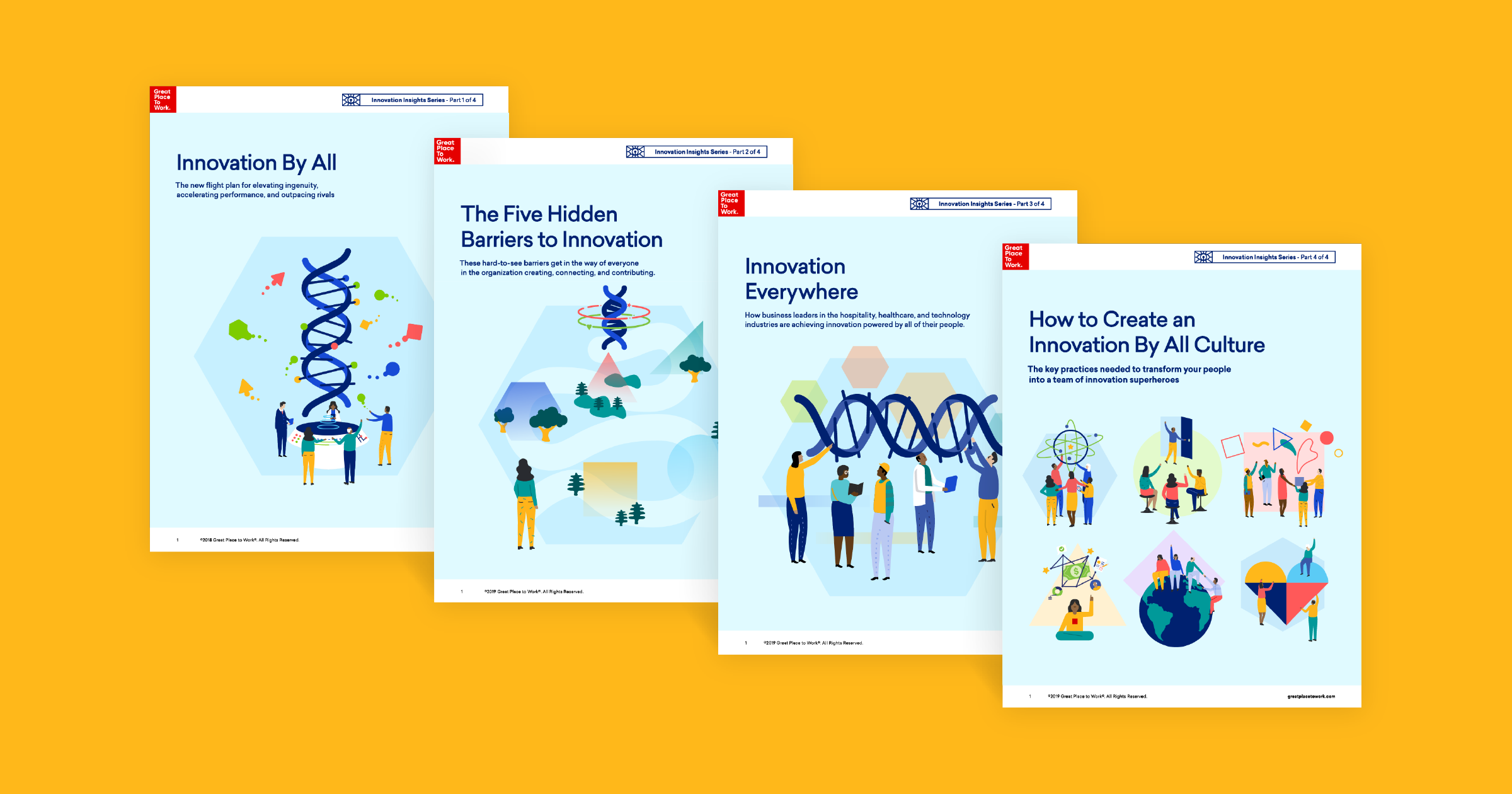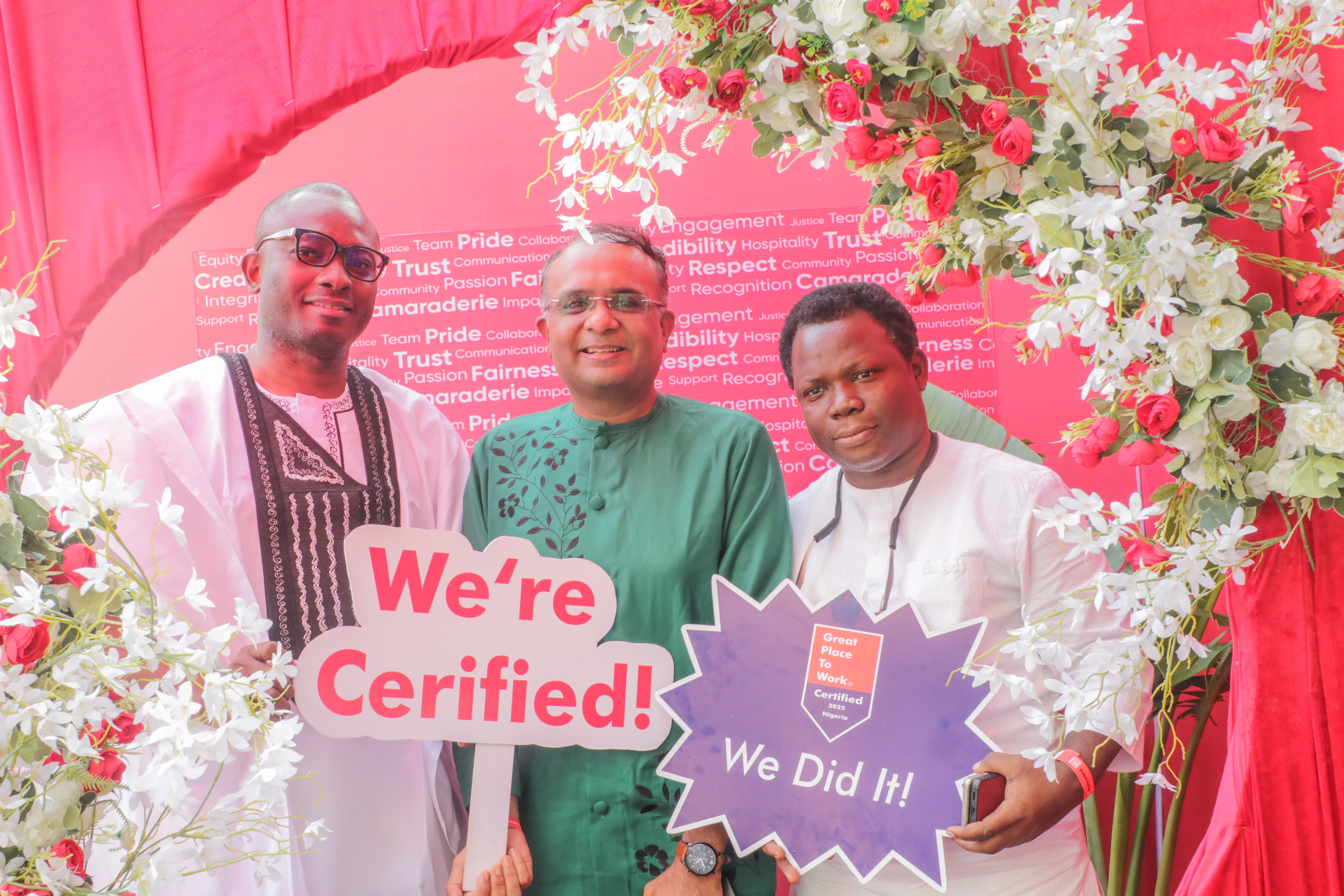“Innovation comes ultimately from a diversity of perspectives. So when you combine ideas from different industries or different cultures, that’s when you have the best sense of developing groundbreaking ideas.” – Frans Johansson
Frans Johansson knows what we have known at Great Place to Work® for 30 years – inclusive workplace practices are core to creating a culture of innovation. This proven philosophy is what we call Innovation By All™ – when leaders cultivate the intelligence, skills, and passion of everyone in the organization. Everybody creates, everybody is connected and everybody contributes.
In our ongoing annual research on the Fortune 100 Best Companies to Work For®, we found six practices that cultivate this inclusive, innovative workplace environment.
How to create a culture of innovation in the workplace
1. Give all types of space
Leading companies make space for more than work. They create mental, emotional and temporal space. Space for employees to be creative, take risks and come up with ideas that advance the organization.
2. Create energy by thanking all
Recognizing everyone for their efforts, not just their outcomes, doesn’t dilute the idea. Instead, it acts as a fertilizer. It energizes individuals and the entire organization. And encourages people to keep contributing. The enthusiasm around.
3. Nurture diverse connections
Leading organizations build bridges, bringing people together who otherwise might never talk to each other, let alone collaborate.
Diverse team connections can see an organization through a crisis. As the world met the pandemic, Farmers Insurance CEO Jeff Dailey created a cross-functional team of leaders from human resources, government affairs, internal and external communications, legal and real estate teams to monitor the COVID-19 situation.
“The team was established with the understanding that no one person had all the answers,” a spokesperson at the company told us. Jeff made this team a priority – ensuring he was readily available, providing direct access and support to assist in immediate decision-making or offering feedback.
4. Invest in everyone’s growth
Lavishing resources only on employees who show “high potential” is misguided. It ignores the potential of others and can have unintended consequences. It often leads to feelings of frustration and favoritism. The best leaders see the value of maximizing all human potential and help every employee develop – including developing them outside of work.
5. Make it easy for all
Leading organizations know to leave no stone unturned. It’s not enough to put out a suggestion box. They make it simple for their people to generate ideas – and lots of them.
These companies go further by providing guidance for fleshing out a new concept. They adopt systems that allow peers to comment on and get behind promising proposals.
6. Inspire all with purpose
Our research shows that when employees use the term “incredible” to describe their workplace – such as “incredibly hardworking environment” or “incredible company journey” – they are 81% more likely to experience meaningful innovation opportunities.
At most organizations, inspiration and purpose drop as you move down management levels. The best leaders find ways to motivate people at every layer. From those in the C-suite to employees in the warehouse.
Whenever the company gets together in different countries, they plan a community service where everybody participates, no matter who they are or what they do for the company, ensuring that meaningful work is felt at all levels.
Innovation By All company cultures generate more high-quality ideas and adopt them faster. To learn more about how we can help you create an inclusive culture that cultivates innovation at all levels, get in touch with us.
Source: Claire Hastwell (GPTW US)








